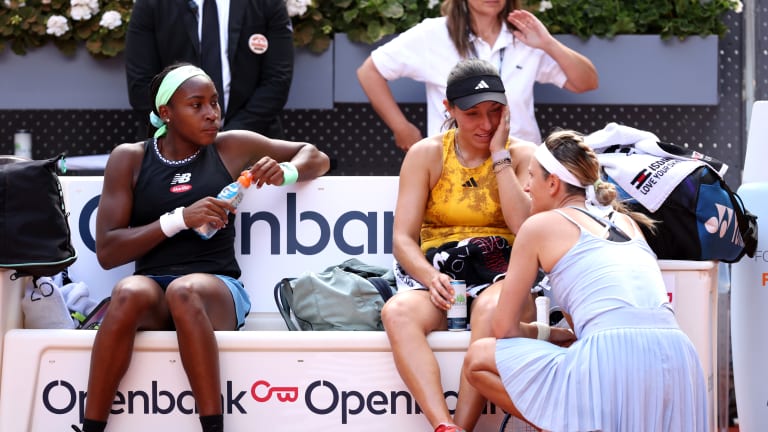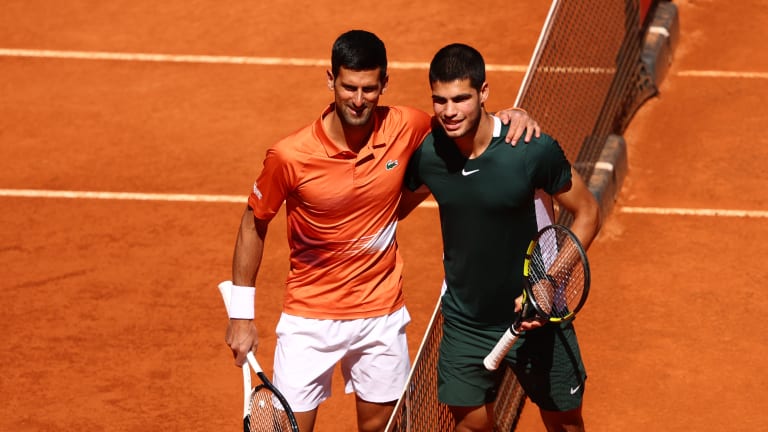The Rally
Have Aryna Sabalenka and Carlos Alcaraz made themselves the players to beat?
By May 10, 2023The Rally
Is Saquon Barkley football’s Novak Djokovic—and can his Philadelphia Eagles knock off the Kansas City Chiefs?
By Feb 07, 2025The Rally
The Rally: Mixed feelings about the Davis Cup, players to watch on the men's tour in 2022
By Dec 06, 2021The Rally
The Rally: Is Indian Wells a glimpse of the future?
By Oct 16, 2021Lifestyle
Mirra Andreeva belts 'Happy Birthday' song to coach Conchita Martinez in Stuttgart
By Apr 16, 2025ATP Munich, Germany
Ben Shelton uses altitude to his advantage, joins Alexander Zverev in Munich quarterfinals
By Apr 16, 2025WTA Stuttgart, Germany
Iga Swiatek in Stuttgart: From clay court to carpool karaoke!
By Apr 16, 2025Lifestyle
Thorne taps Ben Shelton to launch new on-the-go performance line
By Apr 16, 2025Social
Lois Boisson had the perfect response to Harriet Dart deodorant controversy
By Apr 16, 2025Social
Dominic Thiem ‘loves’ watching Jakub Mensik and Joao Fonseca
By Apr 16, 2025The Rally
Have Aryna Sabalenka and Carlos Alcaraz made themselves the players to beat?
We talk Madrid champions and controversies and look ahead to Rome—and to whether Swiatek and Djokovic may give us another plot twist before Paris.
Published May 10, 2023
Advertising
Advertising

Gauff, Pegula and Azarenka chat after Sunday's doubles final in Madrid.
© Getty Images
Advertising

Game, Set, Bet: Credit One Charleston Open
Everything you need to know about this loaded 500—presented by BetMGM.
Advertising

Coming off a final-round loss to Sabalenka in Madrid, Swiatek will be extra motivated in Rome—a scary thought.
© Getty Images
Advertising

Last May, in Madrid, Djokovic and Alcaraz met for the first—and thus far only—time, in the semifinals. The Spaniard came away with the win in a third-set tiebreak.
© Getty Images
Advertising

Always Playing: Pickleballtv
The 24-hour channel of America’s fastest growing sport now has an app.